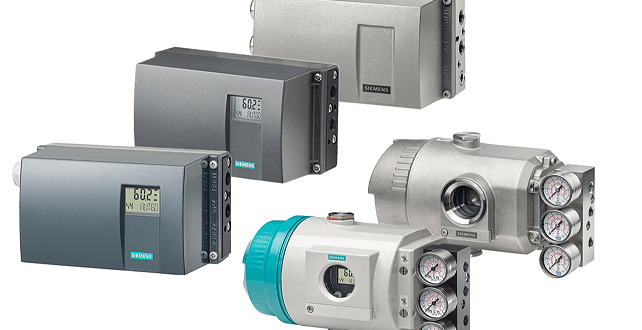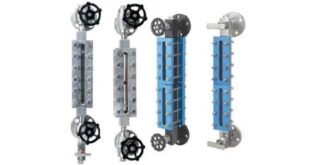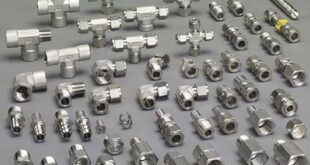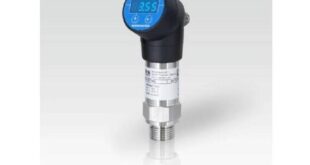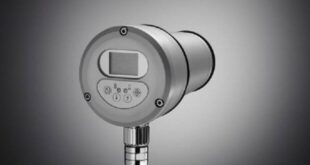What is the valve positioner in control valve, types and principle of work
In the intricate world of industrial automation, precision is paramount. Achieving optimal control over fluid flow in pipelines and processes necessitates not only high-quality control valves but also a critical component that refines their performance – the positioner. This comprehensive guide aims to demystify positioners in control valves, providing an in-depth exploration of their definition, types, operating principles, applications, and the technological advancements shaping their role in modern industrial settings.
I. Understanding Positioners in Control Valves
A. Definition and Purpose
Positioners are devices designed to enhance the precision and responsiveness of control valves by accurately controlling their position based on external signals. In the context of control valves, positioners play a crucial role in translating control signals from the automation system into precise movements of the valve actuator. This precise control ensures that the valve opens, closes, or modulates to the desired position, thereby regulating the flow of fluids with exceptional accuracy.
The primary purpose of positioners is to overcome the inherent limitations of pneumatic or electric actuators, providing a means to achieve finer control over the valve’s position and, consequently, the flow rate. By continually adjusting the valve position based on feedback, positioners contribute to the overall efficiency, stability, and reliability of industrial processes.
B. Types of Positioners
Pneumatic Positioners:
- Utilize compressed air to control the position of the valve actuator.
- Common in industries where pneumatic systems are prevalent.
- Reliable and well-suited for various applications.
Electro-Pneumatic Positioners:
- Combine electrical and pneumatic components for enhanced control.
- Provide greater flexibility and precision compared to purely pneumatic positioners.
- Suitable for applications requiring finer adjustments and responsiveness.
Digital Positioners:
- Employ digital control signals, often using microprocessors.
- Offer advanced features such as communication protocols, diagnostics, and self-tuning capabilities.
- Enable seamless integration with modern control systems.
C. Advancements in Positioner Technology
As technology advances, positioners are undergoing transformations that enhance their capabilities and compatibility with modern industrial requirements.
a. Smart Positioners:
- Equipped with intelligent features such as self-diagnosis and condition monitoring.
- Enable predictive maintenance, reducing downtime and improving overall system reliability.
b. Digital Communication Protocols:
- Integration with industry-standard digital communication protocols (e.g., HART, Profibus, Foundation Fieldbus).
- Facilitate real-time data exchange and remote monitoring.
c. Adaptive Tuning:
- Implement adaptive tuning algorithms that automatically adjust the positioner’s parameters based on system conditions.
- Enhance responsiveness and accuracy in dynamic operating environments.
II. Operating Principles of Positioners
A. Basic Operating Mechanism
Input Signal Processing:
- Positioners receive input signals from the control system.
- Pneumatic and electro-pneumatic positioners convert electrical signals to pneumatic output.
Actuator Adjustment:
- The positioner adjusts the actuator to achieve the desired valve position.
- Fine adjustments are made based on feedback signals to maintain the target position.
Feedback Mechanism:
- Positioners use feedback devices (e.g., potentiometers, encoders) to continuously monitor the actual valve position.
- Deviations from the desired position trigger adjustments to maintain precise control.
B. Control Signal Types
Pneumatic Control Signals:
- Used in pneumatic and electro-pneumatic positioners.
- Signal pressure corresponds to the desired valve position.
Electric Control Signals:
- Utilized in electro-pneumatic and digital positioners.
- Digital signals represent specific valve positions, enabling precise control.
Hydraulic Control Signals:
- Less common but found in specific industrial applications.
- Use hydraulic pressure to adjust the valve position.
C. Valve Positioners in Action
Steady-State Operation:
- In steady-state conditions, the positioner continuously monitors and adjusts the valve position to maintain the desired flow rate.
Dynamic Process Conditions:
- During dynamic changes in the process, such as fluctuations in demand or disturbances, the positioner adapts to maintain control stability.
Fail-Safe Features:
- Many modern positioners include fail-safe features that ensure the valve returns to a predetermined safe position in the event of a system failure.
III. Applications of Positioners in Control Valves
A. Process Industries
Chemical Processing:
- Precise control of fluid flow in chemical reactions and material handling processes.
- Ensures accurate dosing of chemicals and maintains optimal process conditions.
Oil and Gas:
- Regulating the flow of oil, gas, and other fluids in pipelines and refining processes.
- Essential for maintaining operational efficiency and safety.
B. Power Generation
Steam Control:
- Ensures precise control of steam flow in power plants.
- Facilitates efficient power generation and load balancing.
Turbine Bypass Control:
- Regulating steam flow in turbine bypass systems for grid stability.
- Responds quickly to changes in power demand.
C. Water Treatment
Flow Control in Water Distribution:
- Managing the flow of water in treatment plants and distribution systems.
- Optimizes water treatment processes and ensures consistent supply.
Wastewater Treatment:
- Controlling the flow of wastewater for treatment and disposal.
- Maintains environmental compliance and process efficiency.
IV. Installation and Calibration of Positioners
A. Compatibility Check
Valve Compatibility:
- Ensure the selected positioner is compatible with the type and size of the control valve.
- Verify that the positioner’s output matches the valve actuator requirements.
Communication Protocols:
- Confirm compatibility with the communication protocols used in the control system.
- Establish seamless integration for data exchange and monitoring.
B. Mounting and Alignment
Proper Mounting:
- Follow manufacturer guidelines for mounting the positioner on the control valve or actuator.
- Ensure proper alignment to facilitate accurate valve positioning.
Alignment with Valve Stem:
- Align the positioner with the valve stem to ensure precise control.
- Misalignment can lead to inaccuracies in valve positioning.
C. Calibration Procedures
Valve Characteristics:
- Calibrate the positioner based on the specific characteristics of the control valve.
- Consider factors such as valve size, trim type, and response time.
Tuning for Dynamic Conditions:
- Fine-tune the positioner’s parameters to adapt to dynamic process conditions.
- Consider the response time required for changes in flow demand.
Verification Testing:
- Conduct verification tests to ensure the positioner responds accurately to control signals.
- Verify that feedback mechanisms are functioning correctly.
V. Maintenance Practices for Positioners
A. Regular Inspection
Visual Inspection:
- Periodically inspect positioners for signs of wear, corrosion, or damage.
- Address any physical issues promptly to prevent further damage.
Feedback Device Check:
- Verify the proper functioning of feedback devices.
- Ensure accuracy in monitoring valve positions.
B. Lubrication
Actuator Lubrication:
- Follow manufacturer recommendations for actuator lubrication.
- Ensure smooth and reliable movement of the valve actuator.
Moving Parts Inspection:
- Check moving parts within the positioner for proper lubrication.
- Lubricate components as needed to prevent friction and wear.
C. Calibration Verification
Periodic Calibration Checks:
- Schedule periodic checks to verify the calibration of positioners.
- Ensure that the positioner continues to respond accurately to control signals.
Adaptive Tuning:
- If applicable, assess the need for adaptive tuning based on changes in process conditions.
- Fine-tune parameters to maintain optimal performance.
VI. Conclusion
In conclusion, mastering positioners in control valves is an essential aspect of achieving precision and efficiency in industrial processes. These devices, ranging from traditional pneumatic positioners to advanced digital systems, contribute to the seamless regulation of fluid flow, ensuring that processes operate with accuracy and reliability.
As industries evolve and embrace the era of smart manufacturing, positioners play a pivotal role in shaping the landscape of industrial automation. The integration of intelligent features, digital communication protocols, and adaptive tuning capabilities reflects the ongoing commitment to optimizing control systems for the challenges of dynamic and interconnected industrial environments.
By understanding the types, principles, applications, and maintenance practices associated with positioners, professionals in the field of industrial automation can unlock the full potential of control valves. The journey to mastering positioners involves continuous learning, adherence to best practices, and the adoption of innovative technologies that pave the way for a future where industrial processes operate with unparalleled precision and efficiency.
 Ontrose industrial corporation Inc. Engineering and supply of industrial projects
Ontrose industrial corporation Inc. Engineering and supply of industrial projects
